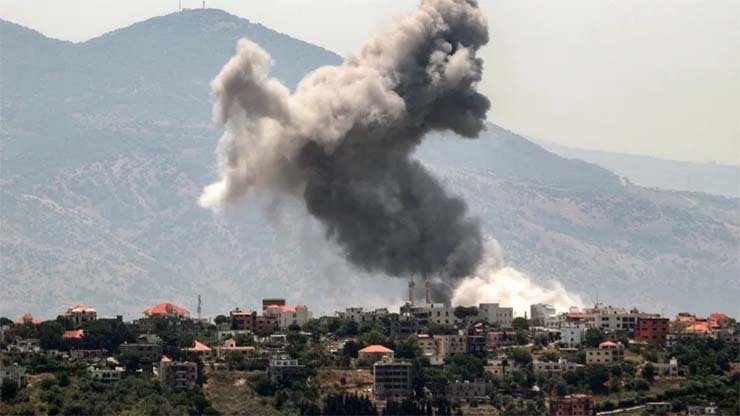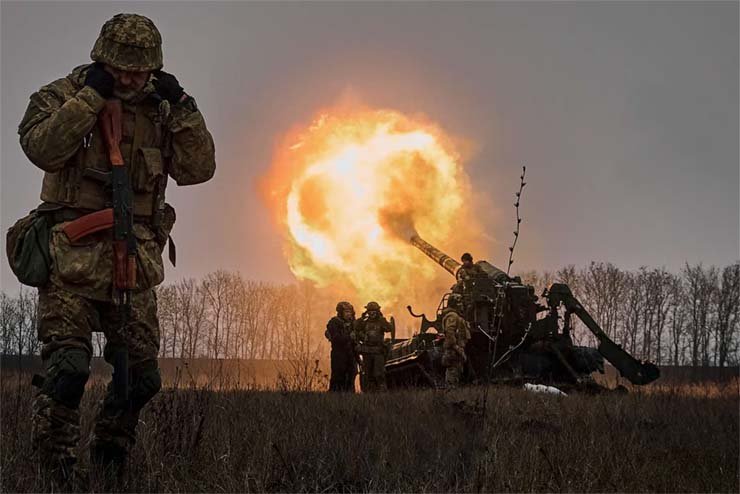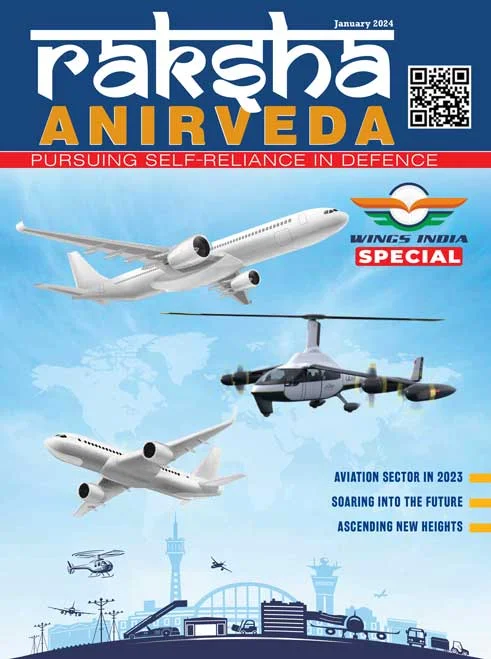Wars, despite their destructive nature, have historically played a significant role in stimulating economies. While the human cost of war is indisputable, the economic impact of conflicts can often result in increased production, innovation, and the growth of certain sectors. From World War I to the more recent wars in Iraq and Afghanistan, the “business of war” has demonstrated how conflicts can lead to a flourishing economy in certain areas, such as arms production, real estate, healthcare, and more.
War as an Economic Catalyst
Wars demand the mobilisation of entire nations’ resources, resulting in increased government spending and massive infrastructural developments. This has often translated into heightened industrial output, especially in defence-related sectors. During times of war, governments typically increase expenditure on military hardware, supplies, and personnel, which can boost employment, spur technological advancements, and foster new industries.
Historical Context: The World Wars
Both World War I and World War II provide significant examples of how war can be an economic stimulant, particularly for the nations that were either the primary participants or suppliers of arms and resources.
World War I
World War I, which began in 1914, is often seen as the first “modern” war, with its unprecedented scale and industrial demands. The United States, which entered the war in 1917, initially profited from the war by supplying arms and materials to the Allied forces. In fact, by the time the US entered the war, it had already become the largest exporter of arms and other war-related products, a trend that continued throughout the 20th century.
The US economy, which had been relatively slow in the years preceding the war, experienced a dramatic boom due to the demand for goods such as steel, textiles, and chemicals. Unemployment, which had been around 7.9% in 1915, dropped to 1.4% by 1918 due to the increased demand for labour to meet wartime production needs. The war effectively transformed the U.S. from a debtor to a creditor nation, with significant profits being made in industries such as arms manufacturing, shipbuilding, and munitions.
World War II
World War II was another significant turning point in the global economy. The war effort required massive amounts of industrial production, not only in the countries directly involved but also in neutral nations. The United States, which again remained neutral during the early years of the war, supplied the Allied forces through the Lend-Lease Act, a program that sent vast amounts of war materials to countries like Britain, the Soviet Union, and China.
Once the US entered the war, the economic transformation was remarkable. Factories that had previously manufactured consumer goods were converted to produce tanks, airplanes, and other war supplies. The war also led to major advancements in technology, including the development of radar, jet engines, and nuclear weapons. These technological innovations would go on to benefit post-war economies in numerous ways.
The US saw its gross national product (GNP) grow by over 50% during the war years, and millions of Americans found employment in the war industries. At the end of the war, many of the industries that had expanded due to wartime production shifted to produce consumer goods, contributing to the post-war economic boom.

The Arms Trade: Profiting from Conflict
One of the most obvious ways in which war can stimulate the economy is through the arms trade. The global arms industry is one of the largest and most lucrative sectors in the world, and it benefits greatly from conflict. From the sale of fighter jets and tanks to ammunition and small arms, the demand for military equipment surges during wartime.
According to the Stockholm International Peace Research Institute (SIPRI), the global arms trade was worth approximately $531 billion in 2020. The largest arms exporters— the United States, Russia, France, Germany, and China—account for more than 75% of all arms exports. The US, in particular, dominates the global arms market, making up nearly 40% of all international arms sales.
The wars in Iraq and Afghanistan, which began in 2003 and 2001 respectively, are prime examples of how conflict fuels the arms trade. The US defence industry saw tremendous growth during these wars, with companies such as Lockheed Martin, Boeing, Raytheon, and General Dynamics securing billions of dollars in government contracts. These companies supplied everything from fighter jets and missiles to communication systems and surveillance equipment.
For example, Lockheed Martin, the world’s largest defence contractor, experienced a significant increase in revenue during the Iraq War, largely due to the production of advanced weapons systems such as the F-16 and the F-35 fighter jets. The company’s profits have remained high due to ongoing conflicts around the world, including the war in Ukraine, where Western countries have supplied Ukraine with advanced weaponry to defend against Russian aggression.
Real Estate and Construction: Rebuilding After War
While war often leads to the destruction of infrastructure, the post-war period is usually marked by a surge in reconstruction efforts, which can be a boon for the real estate and construction industries. After a conflict, rebuilding homes, factories, and public infrastructure becomes a top priority, leading to increased investment in these sectors.
Post-WWII Europe and the Marshall Plan
After World War II, much of Europe was in ruins. Cities like London, Berlin, and Warsaw had been heavily bombed, and millions of people were left homeless. To aid in the rebuilding effort, the United States launched the Marshall Plan, a massive financial aid program that provided $13 billion (approximately $150 billion in today’s dollars) to help rebuild the economies of Western Europe.
The Marshall Plan not only helped Europe recover economically, but it also provided significant business opportunities for American construction companies, suppliers of raw materials, and manufacturers of heavy machinery. The demand for housing, transportation networks, and industrial infrastructure spurred growth in the real estate and construction industries, particularly in the US, which became a major supplier of materials and expertise.
While the human cost of war is indisputable, conflicts often result in increased production, innovation, and the growth of certain sectors. From World War I to the more recent wars in Iraq and Afghanistan, the “business of war” has demonstrated how conflicts can lead to a flourishing economy in certain areas, such as arms production, real estate, healthcare, and more.
The Middle East: War and Real Estate Boom
The modern Middle East provides a unique example of how war and conflict can have a significant impact on the real estate and construction sectors. Countries like Iraq and Afghanistan have seen considerable reconstruction efforts following years of conflict. International companies have been awarded contracts worth billions of dollars to rebuild these war-torn nations, leading to a surge in construction projects, including new residential and commercial properties, airports, and roads.
In contrast, countries that have remained relatively stable in the region, such as the UAE, have benefited indirectly from nearby conflicts. Dubai, for instance, has become a global real estate hub, attracting investment from wealthy individuals and businesses seeking a safe haven from the instability in neighbouring countries.
Healthcare Sector: Treating the Wounds of War
Wars inevitably lead to an increase in demand for healthcare services, both during and after the conflict. Soldiers wounded in battle require immediate medical attention, and the physical and psychological scars of war can last a lifetime. As a result, the healthcare sector—especially industries related to trauma care, prosthetics, and mental health—often sees a surge in demand during and after wars.
Advancements in Medical Technology
Historically, wars have led to significant advancements in medical technology. During World War I, the development of techniques for treating infections, such as the use of antiseptics, revolutionised modern medicine. World War II saw the widespread use of antibiotics like penicillin, which saved countless lives on the battlefield and became a standard treatment for infections in civilian populations after the war.
More recently, the wars in Iraq and Afghanistan have spurred advancements in trauma care and prosthetics. Medical professionals in these conflict zones have developed new techniques for treating severe injuries, such as traumatic brain injuries (TBIs) and limb amputations. The demand for advanced prosthetics has also increased due to the large number of soldiers who have lost limbs in these conflicts. Companies that specialise in prosthetics and rehabilitation technologies, such as Össur and Ottobock, have benefited from these advancements and continue to expand their market.
Mental Health and Post-Traumatic Stress Disorder (PTSD)
In addition to physical injuries, war often leaves soldiers and civilians with psychological trauma. The increasing recognition of conditions such as PTSD has led to a growing demand for mental health services and treatments. Governments and non-governmental organisations (NGOs) have increased funding for mental health programs, creating new business opportunities for providers of mental health services, pharmaceuticals, and therapy.
For example, the US Department of Veterans Affairs (VA) has significantly expanded its mental health services in response to the high number of veterans returning from Iraq and Afghanistan with PTSD. This has led to increased spending on mental health care, benefiting pharmaceutical companies that produce antidepressants, antianxiety medications, and other treatments for PTSD and related conditions.
Lockheed Martin, the world’s largest defence contractor, experienced a significant increase in revenue during the Iraq War, largely due to the production of advanced weapons systems such as the F-16 and the F-35 fighter jets. The company’s profits have remained high due to ongoing conflicts around the world, including the war in Ukraine, where Western countries have supplied Ukraine with advanced weaponry to defend against Russian aggression
Broader Economic Impact of War
While the arms trade, healthcare, real estate, and construction sectors are some of the most directly affected by war, the economic impact of conflict extends far beyond these industries.
Innovation and Technological Advancements
War has historically been a driver of technological innovation. The need for more effective weapons, communication systems, and transportation methods during wartime often leads to advancements that have civilian applications in the post-war period. For example, the development of radar technology during World War II led to significant advancements in aviation and telecommunications after the war. Similarly, the space race, which was heavily influenced by Cold War tensions, resulted in numerous technological innovations, including satellite technology and GPS, which have become essential to the modern economy.

Employment and Economic Growth
Wars can also temporarily reduce unemployment by creating new jobs in defence-related industries and the military. During World War II, for instance, millions of Americans found employment in factories that produced war materials. The war effort also required large numbers of soldiers, reducing the civilian unemployment rate to near-zero levels.
In the post-war period, economies often experience rapid growth as countries rebuild and reintegrate soldiers into the workforce. The US economy, for example, boomed after World War II, leading to the rise of the American middle class and the “baby boom” generation.
Challenges and Long-term Costs
While war can stimulate certain sectors of the economy, it is important to acknowledge that the long-term economic costs of war are often substantial. Wars can lead to massive government debt, inflation, and the destruction of valuable infrastructure. In many cases, the economic benefits of war are outweighed by these long-term costs, particularly for the countries where the conflict takes place.
For example, the wars in Iraq and Afghanistan have cost the US government over $2 trillion, contributing to the country’s growing national debt. Additionally, the destruction of infrastructure in these countries has made it difficult for their economies to recover, despite international aid and reconstruction efforts.
Conclusion
The business of war is a complex and multifaceted phenomenon that affects economies in both positive and negative ways. While wars can lead to economic growth in certain sectors, such as arms manufacturing, healthcare, and real estate, the long-term costs of conflict often outweigh these benefits. As history has shown, war can drive innovation and technological advancement, but it also leaves a legacy of destruction and human suffering that can take generations to repair.
Ultimately, the economic impact of war depends on a variety of factors, including the scale and duration of the conflict, the involvement of other nations, and the ability of post-war economies to rebuild. While the business of war may provide short-term economic gains, the true cost of conflict is often measured in the lives lost and the long-term damage to societies and economies.
–The writer is a seasoned media professional with over three decades of experience in print, electronic, and web media. He is presently Editor of Taazakhabar News. The views expressed are of the writer and do not necessarily reflect the views of Raksha Anirveda










